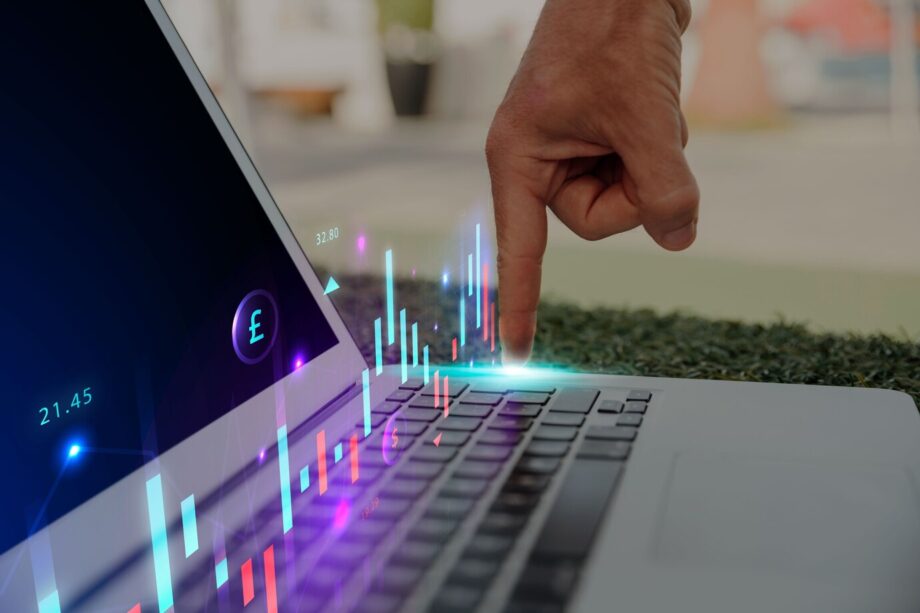
The trading floor pulsates with the frantic energy of human speculation, but a silent revolution is underway. Automated trading systems, powered by algorithms and fueled by vast data, are steadily usurping the dominance of human instincts. These digital maestros execute trades at lightning speed, unburdened by emotions and guided by cold, hard logic. Their ascent raises crucial questions: will machines eventually eclipse human traders, or can we forge a harmonious partnership in the modern market?
Understanding Automated Trading Systems: The Essence of Algorithmic Trading
Automated Trading Systems (ATS) represent a paradigm shift in the way financial markets operate. At their core, these systems leverage sophisticated algorithms and computer programs to analyze an extensive array of market variables. These variables encompass price movements, trading volume, and temporal factors, allowing the algorithm to make informed decisions about when to initiate or exit trades. The essence of ATS lies in their ability to navigate the complexities of financial markets with a level of precision and speed that surpasses human capabilities.
These algorithms are not arbitrary; they are meticulously crafted strategies designed to capitalize on market inefficiencies and exploit patterns. The strategies can range from simple instructions to complex models based on statistical analysis, machine learning, or artificial intelligence. The objective is to identify opportunities and execute trades automatically, without the need for human intervention.
As ATS continue to evolve, they have become integral tools for traders and institutions seeking a competitive edge. The understanding of market dynamics, coupled with the agility of automated systems, enables traders to respond promptly to market changes. This transformative approach to trading has implications not only for individual investors but also for the broader financial ecosystem, challenging traditional notions of market behavior and human involvement in the trading process.
Advantages of Automated Trading Systems
- Speed and Efficiency: Automated Trading Systems (ATS) provide an unparalleled speed advantage in financial markets. The ability of computers to process vast amounts of data in milliseconds ensures swift execution of trades, allowing traders to capitalize on time-sensitive opportunities and respond rapidly to market changes.
- Disciplined Execution: One of the fundamental advantages of ATS is their ability to execute trades with disciplined precision. Operating on pre-defined rules and strategies, these systems eliminate the emotional biases that often influence human decision-making. This disciplined approach helps mitigate the impact of fear and greed, promoting consistent and rational trading behavior.
- Backtesting and Optimization: ATS offer the unique capability of backtesting trading strategies using historical data. Traders can assess the performance of their algorithms under various market conditions before deploying them in live markets. This iterative process allows for continuous optimization, enhancing the likelihood of success in diverse market scenarios.
- Diversification: Automated systems can efficiently manage multiple assets and markets simultaneously. This diversification helps spread risk across different instruments and markets, a challenging task for individual human traders. Institutional investors and hedge funds particularly benefit from the ability of ATS to manage diversified portfolios effectively.
The combined effect of these advantages has significantly transformed the trading landscape, making Automated Trading Systems a preferred choice for those seeking to navigate the complexities of modern financial markets with precision and efficiency.
Challenges and Criticisms: Navigating the Pitfalls of Automated Trading Systems
Automated Trading Systems (ATS) have undoubtedly reshaped the financial landscape, yet their ascent is not without challenges and criticisms.
- Systemic Risks: The interconnected nature of algorithmic trading systems raises concerns about systemic risks. Flash crashes, where markets experience sudden and severe price declines, have been linked to the rapid execution of trades by automated systems. The intricate web of interactions between these systems can amplify market movements, potentially posing risks to overall financial stability.
- Lack of Human Judgment: While ATS operate based on predefined rules and algorithms, they lack the nuanced judgment and intuition that human traders bring to the table. These systems may struggle to adapt to unforeseen events or extreme market conditions that go beyond the parameters set by their programming. The absence of human insight could limit the adaptability of automated systems in dynamic and unpredictable market environments.
- Regulatory Concerns: The rise of algorithmic trading has prompted regulatory bodies to reassess their frameworks. Questions about market manipulation, fairness, and the need for safeguards to prevent system malfunctions have led to increased scrutiny and the development of new regulations. Striking a balance between fostering innovation and ensuring market integrity remains a complex challenge for regulators.
Challenges and Criticisms of Automated Trading Systems
| Challenges | Criticisms | Implications |
| Systemic Risks | Rapid market movements and flash crashes. | Potential threats to financial stability due to automated trading. |
| Lack of Human Judgment | Automated systems lack adaptability and intuition. | Limitations in responding to unforeseen events and dynamic markets. |
| Regulatory Concerns | Increased scrutiny and new regulations. | Striking a balance between innovation and market integrity. |
- Systemic Risks: The interconnectedness of algorithmic trading systems poses a risk of rapid and severe market movements. Flash crashes, such as the one witnessed in 2010, highlight the potential dangers of automated systems contributing to market instability.
- Lack of Human Judgment: While algorithms excel in executing predefined strategies, they may struggle to adapt to unforeseen circumstances. Human traders often rely on intuition and judgment to navigate ambiguous market conditions, something that automated systems may find challenging.
- Regulatory Concerns: The rapid evolution of ATS has necessitated regulatory adaptation. Concerns about market fairness, manipulation, and system malfunctions have led to increased regulatory scrutiny, with authorities working to strike a balance between encouraging innovation and safeguarding market integrity.
The Future of Trading: Embracing Technological Evolution
The trajectory of trading is unmistakably intertwined with technological advancements. As we look to the future, the integration of cutting-edge technologies will play a pivotal role in shaping the landscape. Artificial intelligence, machine learning, and big data analytics are anticipated to become even more integral components of Automated Trading Systems (ATS). These technologies offer the promise of enhanced predictive capabilities, allowing algorithms to adapt dynamically to evolving market conditions.
Human-Machine Collaboration
While the rise of Automated Trading Systems introduces automation, the future of trading envisions a harmonious collaboration between humans and machines. The synergy of human intuition and creativity combined with the speed and efficiency of algorithms holds immense potential. Traders will likely assume more strategic roles, utilizing automated tools as valuable aids to inform decision-making rather than as replacements for human judgment. This shift towards human-machine collaboration aims to leverage the strengths of both, fostering a more resilient and adaptive trading environment.
Navigating Ethical and Regulatory Frontiers
As the future unfolds, the ethical and regulatory dimensions of automated trading will come into sharper focus. Striking a balance between innovation and ensuring fair, transparent, and secure markets will be a paramount concern. Regulators will continue to evolve frameworks to address potential risks and challenges posed by increasingly sophisticated algorithms. Moreover, ethical considerations surrounding the responsible use of AI and automation in trading will become central to industry discussions, demanding a thoughtful and inclusive approach to technology-driven market evolution.
In essence, the future of trading is poised to be marked by a seamless integration of advanced technologies, a collaborative synergy between humans and machines, and a steadfast commitment to ethical and regulatory considerations. As we navigate this future, the financial industry stands at the forefront of a technological revolution that promises not only increased efficiency but also novel approaches to managing the complexities of global financial markets.
